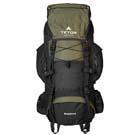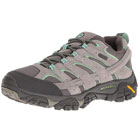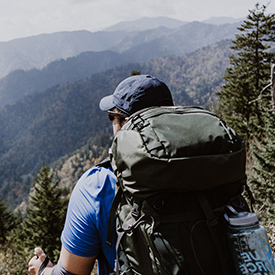The Appalachian Trail is a 2,200-mile hiking trail that extends from Georgia all the way to Maine. It can be hard to know what to bring to the Appalachian so we made this helpful list.
The A.T. is home to some of the most beautiful views in the United States, but presents some hazards as well: severe weather including high winds, rugged terrain, mosquitos, chiggers and importable water sources for starters!
Be prepared for anything that can happen on the trail with this quick list. We also include what to wear on the Appalachian trail, what NOT to bring as well as important FAQs.






















